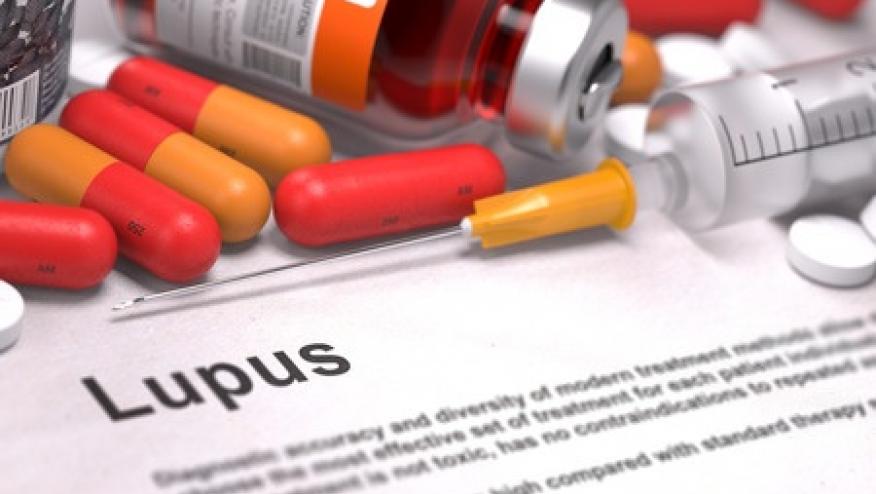Year of the Wolf: Lupus at EULAR2020 Save

For a disease that has been recognized since the days of Hippocrates, we are finally making some progress towards understanding systemic lupus erythematosus (SLE) and how to tame the wolf. Listed below are the top 5 studies and their summaries presented at the recent EULAR e-Congress conference streamed from Germany that I found impactful:
- Abstract #OP0167: MMF can be successfully withdrawn in quiescent SLE
102 adults with quiescent SLE receiving MMF>2 years or non-renal SLE for >1 year were randomized to MMF maintenance arm (MA) vs. withdrawal arm (WA) over a 12 week taper and followed for 60 weeks. Hydroxychloroquine and glucocorticoids were maintained. Mean disease duration 13 years, 76% with LN, mean MMF duration 6 years, mean prednisone dose < 5 mg/day. 10% MA had a flare vs. 17% WA; time to flare was 38 weeks in both arms. The risk for clinically significant flare with MMF withdraw is < 15% over 60 weeks.
- Abstract #OP0164: Belimumab (BEL) with standard therapy is safe and effect in active lupus nephritis
BLISS-LN is a phase 3 RDBPCT 104 week study in 448 adults with ISN/RPS class III, IV, V who were randomized to receive BEL vs. placebo, plus standard therapy. 43% on BEL vs. 32.3% placebo, p=0.0311 achieved primary efficacy renal response defined as urine protein:creatinine ratio < 0.7, eGFR within 10% pre-flare value or >90 ml/min/1.73m2 without rescue therapy. Time to renal related event or death favored belimumab with a hazard ratio (HR) 0.51 (95% CI 0.34-0.77), p=0.0014. NO increased safety signals were identified.
- Abstract #OP0193: BIIB059 targeting plasmacytoid dendritic cells (pDC) show efficacy for cutaneous lupus erythematosus
The LILAC phase 2 part B trial evaluated BIIB059 for patients with cutaneous lupus in this multicenter, international randomized double blind placebo controlled trial (RDBPCT). 132 patients with active SCLE or CCLE were randomized to 3 doses (50 mg, 150 mg or 450 mg q4weeks) of BIIB059 vs. placebo in this 16 weeks study; the study met its primary endpoint with a dose response for CLASI-A changes from baseline. The mean CLASI-A % change from baseline for placebo, BIIB059 50 mg, 150 mg, or 450 mg were -14.5, -40.8, -33.5, and -43.5, respectively with p-value 0.001. No untoward safety signals were identified with the study drug.
- Abstract #OP0161: Tacrolimus (TAC) + glucocorticoids (GCs) is noninferior to Mycophenolate (MMF) + GCs for lupus nephritis (LN) induction therapy based on 10 years followup data in a Hong Kong Cohort
150 patients randomized to MMF (2-3 g/day) vs. TAC (0.1-0.06 mg/kg/day) with prednisolone 0.6 mg/kg/day for 6-8 weeks then tapered. 82% of patients had ISN/RPS class III/IV and 19% with pure class V. Rate of complete renal response (CR) for MMF and TAC respectively were 59% and 62%, p=0.71. Those who achieved CR or good partial renal response were maintained with azathioprine. The cumulative risk of renal flares for MMF/AZP at 3 years 28%, 5 years 42% and 10 years 58%; compared to TAC/AZP at 3 years 32%, 5 years 53%, and 10 years 66%, p=0.43. The cumulative incidence of declined of eGFR>30%, CKD stage 4/5 or death at 5 and 10 years for MMF 24% at 5 years and 33% at 10 years compared to TAC 17% at 5 years and 33% at 10 years p=0.9.
- Abstract #THU0268: Children born to mothers with SLE and anti-phospholipid syndrome (APS) have higher incidences of attention deficity hyperactivity disorder (ADHD), speech/hearing delays, and special education needs compared to the general population.
38 mothers with SLE and APS and 60 offsprings had antenatal, delivery, prenatal, and pediatric histories (including child's cognitive, physical, social maturity) were reviewed. ADHD was found in 25% of offsprings, speech delay in 40%, and recent memory delay in 93%. Maternal APS history was significantly associated with increased use of special educational needs among offsprings. Author's note- This study highlights a very important issue: to recognize and screen children of mothers with SLE and APS for educational needs; these children and mothers may need additional resources and assistance.









If you are a health practitioner, you may Login/Register to comment.
Due to the nature of these comment forums, only health practitioners are allowed to comment at this time.